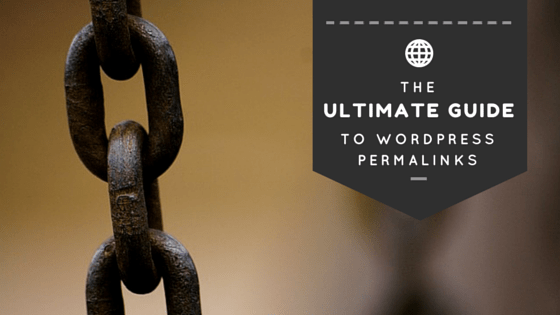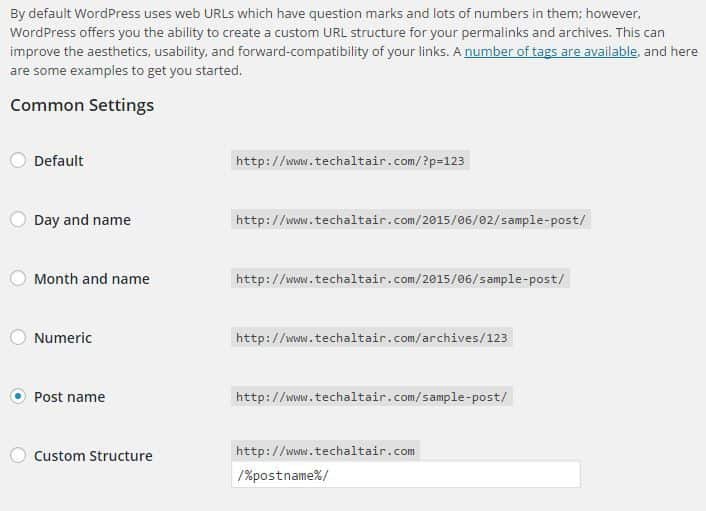
03 Jun WordPress Permalinks: A Guide to Optimizing your Permalinks and Slugs
WordPress is undoubtedly the best CMS out there. With an understanding of its core, you would love to rephrase my earlier comment into WordPress is undoubtedly the best CMS out there, but with problems that are not hidden deep inside.
Some of the problems are quite obvious and requires a little introspection. Today, I will go through the term, known as “Permalinks”.
Permalink is the URL that is associated with the WordPress website. The fancy name is quite understandable in the first glance and can be used in normal conversation with fellow workers.
URL(Uniform Resource Locater) is what you type in the browser for opening any website. For example, the URL for 85Ideas is http://www.85Ideas.com. Without the URL, you and us will be lost in eternity.
Jokes apart, the permalink offers great functionality for both humans and search engines to keep track of the websites and all its pages. If correct URL are not entered, the default 404 web page will be displayed, giving a bad impression for the visitors. A simple 301 redirect can easily solve the problem and save you lost visitors and an embarrassing moment.
With the 404 error apart, the next step is to dive deep into the Permalink idea and how they work in WordPress. You will be astonished to know that the default permalinks are useless and add no value to the website. So, why the wait? Let’s study the default permalink structure.
WordPress Permalinks Guide
The Default Permalink Structure
To understand the default permalinks structure, the first step is open the permalink settings in your WordPress website.
When you are in the dashboard, go to the settings > Permalinks.
The image is in itself tells the whole story. But, we will go through each of the settings one by one.
Default Permalinks is what you get with default WordPress installation and they look ugly and not useful. Numbers are not what humans mind remembers and it is not always a good idea for the visitors to remember the URL by a number.
WordPress can be quite a nuisance for the beginners as it just saves the default one, i.e., http://www.xyz.com/?p=123 as the permalink structure.
So, what does it signify? The permalink, in this case, is trying to fetch the post from the WordPress database. The database entry for the post is p=123 and it looks at the 123rd row in the post table for fetching the content.
Interesting, right? We have no issues on how it works. But, the way of representing the permalink is just not great for the search engines and the users.
The right way of permalink should be http://www.xyz.com/?some-interesting-post. And this link will grab both user attention and the search engine.
The URL part that is beyond the “?” is known as the query string. The query string is sent to the main address for sending additional information to the server. This information is demystified by the server and the right resource is sent back to the client/user.
Search Engines are more inclined to user experience and that’s why Google search engine always prefer a readable URL compared to a URL that is non-readable. Another important factor of using user-friendly URL is that you can easily incorporate main keywords, which in turn can improve Google friendliness and chances of coming to the first page.
What about the Other Permalink Structures?
The other permalink structures are user-friendly or in other words liked by the search engine. The most used permalink is %postname% and it does do everything you ever need from the permalink. With so much emphasis on the clean URLs, let’s explore the different permalinks that are available with the WordPress ecosystem. The permalink structures are also known as structure tags. Currently, WordPress comes with ten structure tags. Let’s list them to find out more.
- %postname% — use post name as the permalink.
- %post_id% — use ID of the post as the permalink
- %category% — use Category name under the post as the permalink structure
- %year% — Year of the article published.
- %monthnum% — Month of the article published.
- %day% — Day of the article published.
- %hour% — Exact Hour of the article published
- %minute% — Exact minute of the article published
- %second% — Exact second of the article published.
- %author% — Author name used for generating permalinks.
With so many options, you can easily feel overwhelmed. But, you should not worry much as we will go through the ones that matter and ignore those that add no value to the post done on the WordPress platform.
The most frequently used permalink structures are the %postname%, %category%, and others. The idea of using permalinks can also be extended by using two of these structures.
%category%%postname% is a prime example of how the permalink structures can be combined to gain the maximum effect.
Understanding the Most Important Permalink Structures
With so many permalink structures, it is a wise decision only to discuss the permalinks that matter. Let’s start.
1. Post Name (/%postname%/) — This is what most of the blogs or websites use and it is pretty good at rendering the essence of the blog post. Readers can also remember the URL and search engine also love this type of clean URLs.
2. Category and Post Name Together (/%category%//%postname%/) — If a blog is regularly posting on a particular topic(for example event postings), it become necessary for them to categorize the articles. Using category can also improve the SEO aspect of many websites as Google always love structured data.
3. Day and Name (%/year%//%monthnum%//%dau%//%postname%/) — A very popular way of using the permalink is Day and Name and there is no point in guessing which websites use this type of permalink structure. News or websites that frequently post throughout the day prefer to utilize this kind of structuring and this makes sense. A structured approach is much better and there can be the clash on the URL if they do not utilize the day and name convention.
4. Month and Name(/%year%//%monthnum%//%postname%/) — With so much emphasis on high frequency of posting, some blogs post in the matter of months and it is quite valuable for them to use this set of permalinks compared to others.
The urge to explain each of them can make the article too big and hard to digest and that’s why I sticked with the mostly used permalinks.
The best permalinks depend on what type of blog you are running. For example, my blogs always have the post name (/%postname%/) permalink and I post once daily to keep the regular users engaged.
On the other hand, any news websites should consider using the Day and Name permalink structure. This will keep every information structured and they can easily find out previous data, just looking at the URL(pretty indeed).
The Last Nail in the Coffin: The Category and Tag Base
Further down the road, you will see the category and the tag base. The category and tag base is used to override the default way the WordPress process them.
With the category tag and tag base, all the articles that have been categorized or are distributed according to the tag will be shown either in
www.xyz.com/category/category-name or www.xyz.com/tag/abc.
You can modify the behavior by using any of the permalink structures out there. Furthermore, you can also remove the category word from the URL.
Wrap Up
Permalinks are an important part of a website. With so much to understand and digest, permalinks can dictate on how the website structure is built. Using the correct permalink can bring wonders for the readers and the search engine.
It is always better to not use the default permalinks. Depending on your website type, you can easily use post name, category name, month, and time and others permalink structures.
Google do love clean URLs, but they really don’t add so much value in the terms of SEO rankings — in short they help, but they will not change anything significantly to your blog rankings.
Which permalink structure you use on your blog? Comment below and let us know. Confused about anything? Comment below and we will resolve it for you!





No Comments